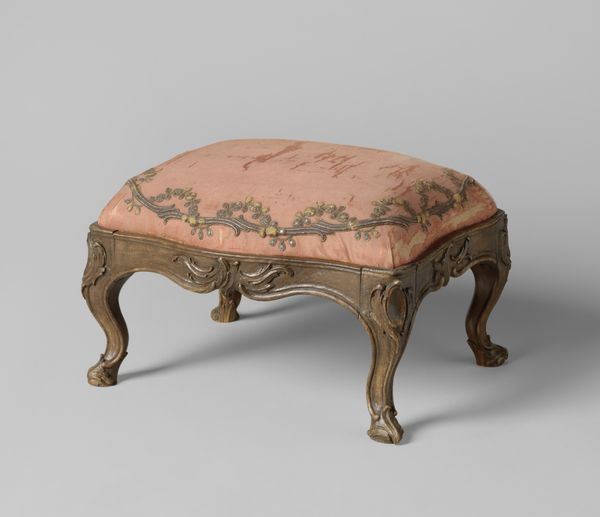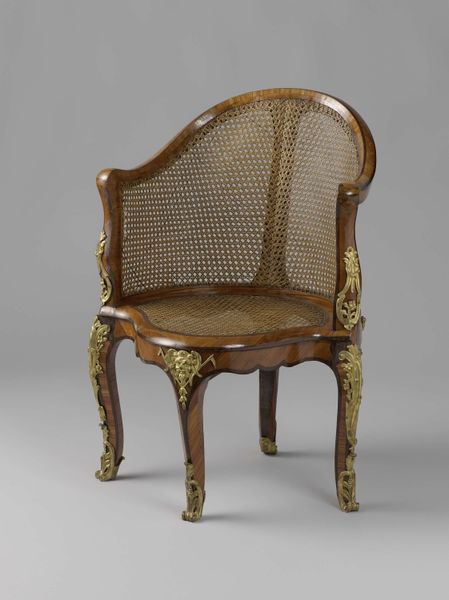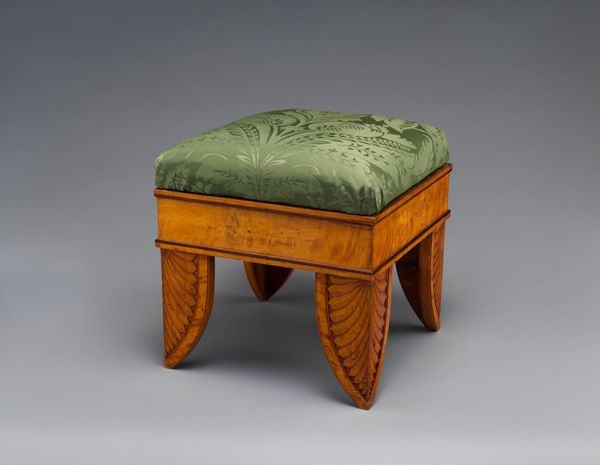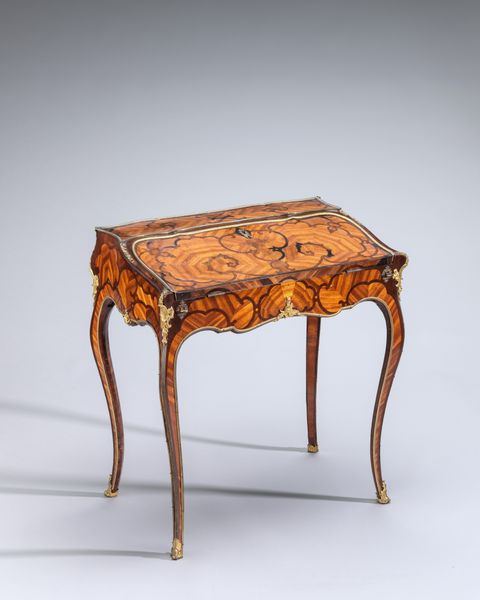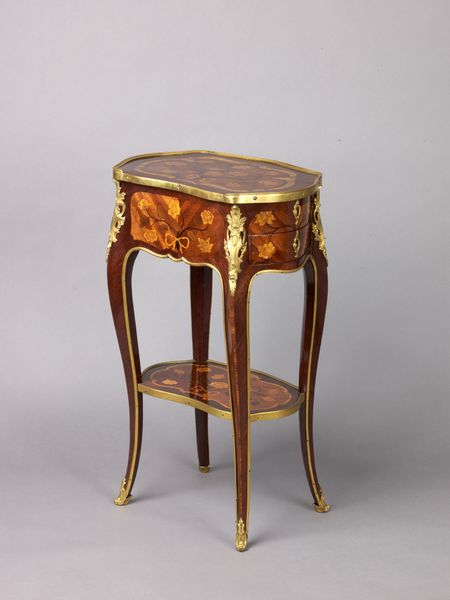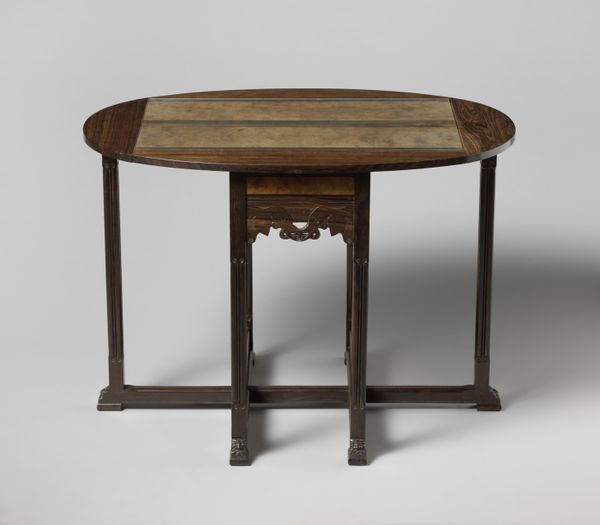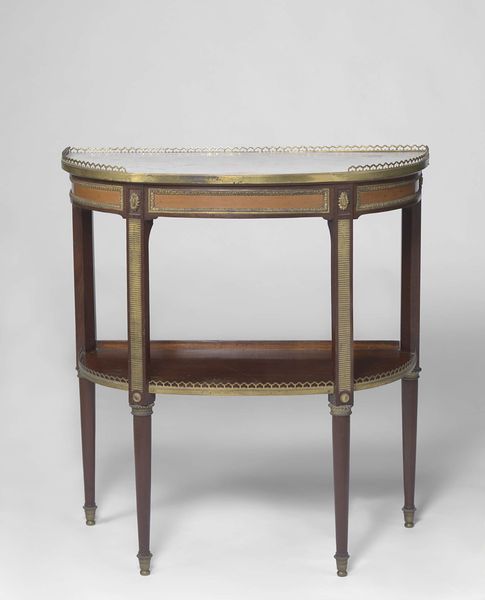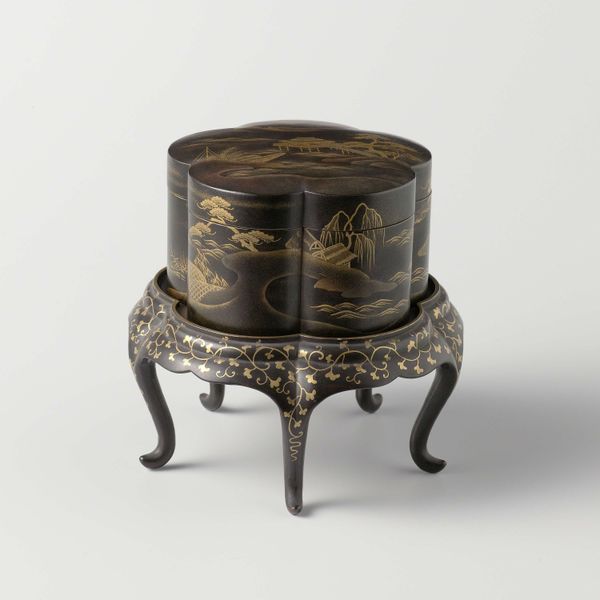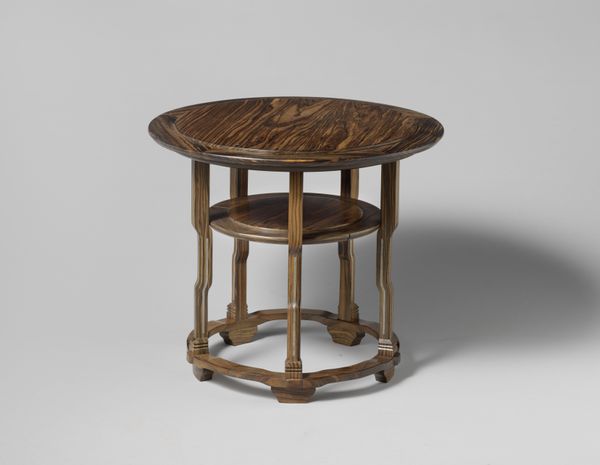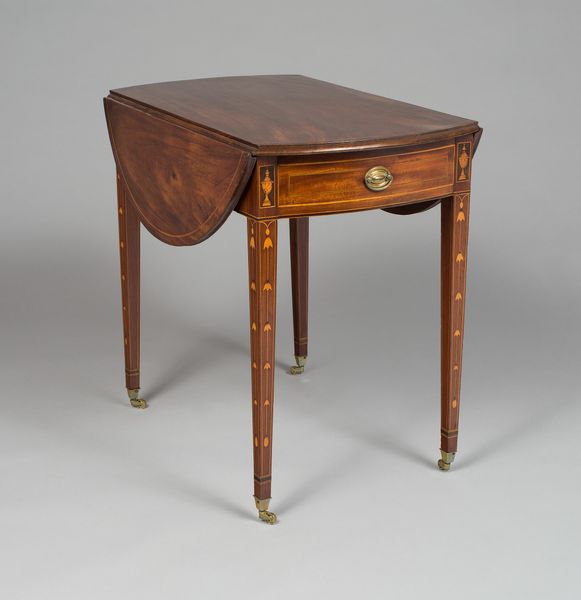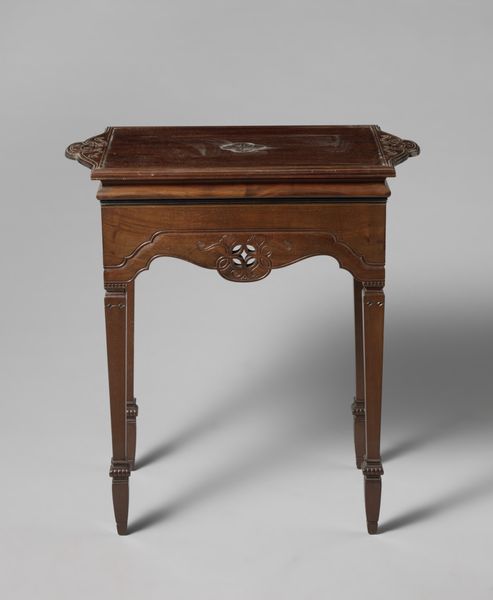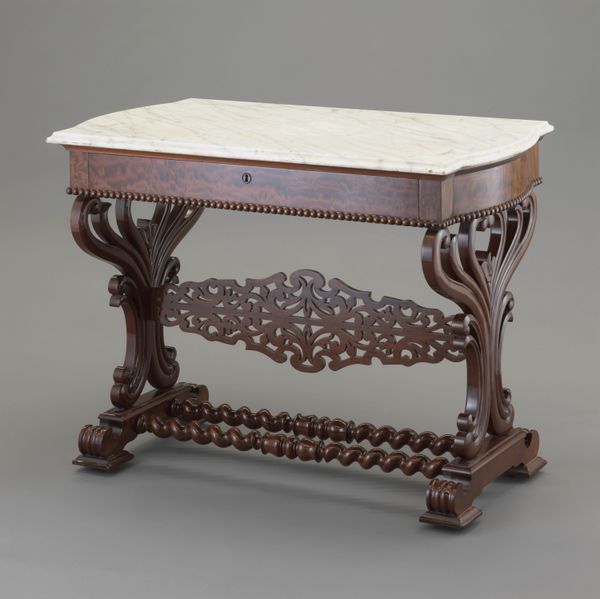
wood
#
art-nouveau
#
furniture
#
stoneware
#
ceramic
#
abstraction
#
wood
#
decorative-art
Dimensions: height 75.0 cm, width 75.0 cm, depth 55.5 cm, weight 32 kg
Copyright: Rijks Museum: Open Domain
Editor: Here we have "Tafel in een ovale vorm met gebogen poten," or "Table in an oval shape with curved legs," by Theo Nieuwenhuis, circa 1910-1920. It's made of wood, currently residing in the Rijksmuseum. The dark wood gives it a serious, almost somber mood. What stands out to you about this piece? Curator: What jumps out at me is how this table pushes against the separation of "fine art" and "craft." We're meant to consider the labor involved: the carving, the joinery. It elevates the artisanal process. What materials were available, what was fashionable, what craftspeople did Nieuwenhuis collaborate with? Editor: Collaboration is an interesting point! So it's not just about the aesthetic but also the societal and economic aspects of its creation. Curator: Precisely! Consider the Arts and Crafts movement happening concurrently. How does this object reflect the social values of the time concerning production? The use of wood connects it to nature, while the very stylized curves show industry involvement, how these were mediated makes it extremely complex. Editor: That makes me see the carved detailing in a new light – as evidence of that intricate handwork. I was focused on the overall shape, but now I'm thinking about the individual choices involved in its construction. Curator: And the material itself dictates some of those choices. What type of wood is it? How does that inform the design? Editor: Now I am thinking about its place in a home and how the making-of has such social weight in such a personal piece. Thank you, this makes me understand art in such a new and comprehensive way. Curator: Art speaks volumes, and objects even more when they also carry functional use, hopefully you’ll continue to ask, “How was it made, and why?”
Comments
No comments
Be the first to comment and join the conversation on the ultimate creative platform.
